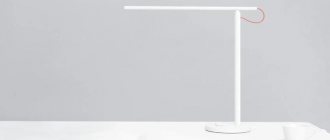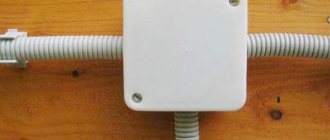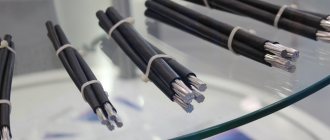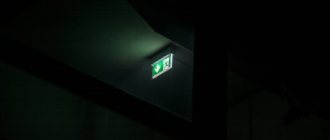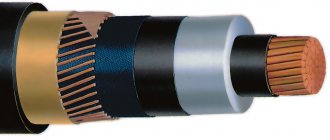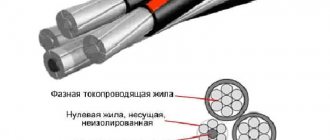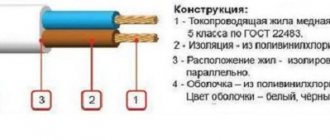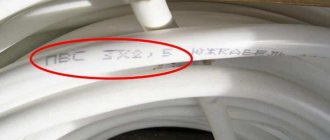Thanks to the successful scheme for generating the luminous flux, linear LED lamps have not only taken root in everyday life, on the street and in industry, they are consistently replacing less practical point and raster designs, especially in places where soft and uniform light is required.
Lighting for the modern kitchen
What are linear LED luminaires?
These lamps represent a class of LED lamps, which today have almost replaced incandescent light bulbs from everyday use and have noticeably pushed aside their main competitors - fluorescent lamps. Their feature is a strict design that allows them to fit into any interior.
Linear LED luminaires are long single lamps. They have an elongated body in the shape of a parallelepiped. This simple device has already found wide application in everyday life and production. They are used to illuminate buildings, premises, and workplaces in offices, classrooms, and kitchens.
LED lines are especially in demand in:
- educational institutions;
- libraries;
- restaurants;
- gyms;
- garages;
- hotels;
- shops and shopping centers;
- swimming pools.
Linear luminaires differ from each other in design and other parameters. By selecting the necessary models, they organize different lighting options - they illuminate the entire room, a separate zone and a certain element of the interior.
Advantages and disadvantages
Linear LED lamps are an innovation in the light organization system. Their widespread use is limited only by the lack of consumer awareness about the enormous advantages of such lamps.
Pros:
- Versatility. Suitable for implementing various tasks and ideas.
- Shadowless lighting. Any point lighting device, including chandeliers, creates light spots. Linear models illuminate the room evenly without leaving shadows.
- Safety. Does not contain toxic substances (mercury). Safe for humans and the environment. They can be thrown away with regular trash.
- Modularity. Many lamps are created in the form of modules. They are assembled in a certain way, achieving the desired light accents.
- High quality lighting. It is smooth and moderately contrasting, maximally safe for the human vision and nervous system. Doesn't heat up or flicker.
- Reliability . The housing and all other structural elements are vibration-resistant.
- Comfortable inclusion. No time is wasted on ignition. The lamp lights up instantly, immediately reaching the set brightness.
- Duration of service. It is an order of magnitude longer than the operating time of incandescent lamps. Estimated service life is 12 years or 50,000-100,000 hours (depending on the manufacturer).
- Saving. It features low energy consumption, allowing you to save on electricity bills. Linear LED lamps reduce energy consumption by 80-90% compared to conventional incandescent lamps.
- Correct visualization of objects. Achieved due to excellent color transmission and high brightness (120 Lm/W).
- Low heat c. LED lines emit little heat, which allows them to be used in combination with lining and suspended ceilings.
- Selecting the lighting temperature. Users can choose from three options – warm, neutral and cool light.
Thanks to the design features of the housing, linear luminaires are resistant to almost all negative factors - temperature changes, moisture, mechanical stress.
LED lines do not require adapters; they are connected directly to the 220 V network.
Disadvantages of a linear lamp:
- May fail due to voltage surges. The built-in power supply does not save the device during significant surges. It is recommended to use additional protection blocks.
- If the power supply fails, you have to replace the entire device, since it is a single mechanism filled with electronics.
- Needs heat dissipation. The substrate to which the LEDs are attached is responsible for it. If the fastenings are broken, cavities may form that prevent normal heat dissipation, which leads to damage to the device.
Advantages
- Practicality. The combination of ease of use and functionality allows you to organize lighting as conveniently as possible.
- Original design.
- Minimum power consumption. Applies to LED devices.
- Safe work. The design does not heat up during operation and does not create strong electromagnetic radiation.
Combination of two types of lamps
- Maneuverability. It's nice to be able to direct the light to the desired areas. The track system with its movable lamps allows you to easily change the direction of the light beam, emphasizing the selected object or interior detail.
- Easy installation. Installation of a structure consisting of ready-made elements does not take much time; the same goes for adding or replacing fixtures.
- Easy care. During operation, the system does not require special care; Periodically you will need to remove dust from its surface.
The main disadvantage is the relatively high cost of track design. For many, the downside is the system’s poor compatibility with some styles; Sometimes the glare of a poorly angled lamp can cause inconvenience.
Design
A linear LED lamp, like other lighting devices, consists of four main parts - a light-emitting element, a power supply and a cooling system, placed in a housing.
Light emitting element
The light source is super bright LEDs. In one device their number reaches tens. The luminous flux and dimensions of the lamp depend on how many diodes are installed on the module.
The sizes of LEDs range from fractions of a millimeter to several centimeters. They are attached to rectangular strips - modules. Instead of diodes, micro-matrices can be used, which contain many unpackaged LEDs - tens and even hundreds.
The use of matrices allows you to significantly increase the luminous flux without increasing the size of the lamp. The matrix, which contains about a hundred mini-diodes, having the size of a regular LED, exceeds it in power several times.
power unit
This node is also called the driver. It is a rather complex electronic device and provides the LED module with the required voltage level. LEDs are sensitive and vulnerable semiconductor elements. A small surge in the network is enough for them to fail.
What problems does the LED driver solve:
- Reduces the mains voltage (220 V) to the value required by the matrix.
- Converts alternating voltage to direct voltage. All diode elements, operating on alternating current, conduct only a half-cycle of the signal. This mode of operation is not suitable; it is necessary to power the diodes with direct current.
- Stabilizes the current at the level required for a specific matrix.
- Suppresses impulse noise and high-voltage surges that occur in the network.
Cooling system
There is an opinion that light sources operating on semiconductor elements do not heat up. But if you put your hand on the body of the lamp after it has been running for several minutes, you will be convinced that there is heating. To remove heat, radiators are installed in LED devices.
Heat dissipation elements have a ribbed surface and are made of metal. They are often located outside the device. Modules with diodes are mounted on radiators. If the case is made of metal, the radiator is often not installed, since its role is played by the casing itself.
Keep the outer surfaces of LED lamps clean by wiping off dust at least once a month. Otherwise, the dust layer interferes with the cooling of the LEDs, and they may burn out.
Frame
The mechanical strength of the device and the duration of its operation depend on the quality of this element. The body consists of two parts - the casing and the diffuser glass. For recessed luminaires, the body is hidden, so there are no special requirements for it.
For surface-mounted lamps, the body must match the interior of the room. Glass – white or transparent, polycarbonate or regular. The casing is made of metal or plastic. The best option is aluminum; it dissipates heat well, preventing the module from overheating.
Plastic cases have different designs. It is recommended to pay attention to the following points:
- there should be no backlash (free space between parts);
- the presence of even holes in the required quantity.
Case material
Manufacturers have now managed to master the production of such products from:
- Rolled sheet steel;
- Polycarbonate, which is distinguished by high impact-resistant characteristics and solidity and makes the weight of the product insignificant;
- An aluminum profile similar in shape to P. Its extrusion ensures both the lightness of the product and anti-corrosion qualities, which are most important for operating conditions with high levels of humidity.
To provide additional protection from adverse weather conditions, aluminum and steel parts are coated with protective powder enamel. The body part is usually closed with a matte or transparent light diffuser.
What types of linear LED lamps are there?
All linear lamps have an elongated, regular shape and glow evenly along their entire length. The angle at which the flow is dissipated depends on the design features and ranges from 100-180 degrees.
According to the method of mounting, lamps are distinguished:
- Angular. These models are placed in niches, corners of rooms, under bedside tables or shelves. They are also used for interior decoration. They visually round corners and expand the space.
- Built-in. They are usually built into the ceiling or walls. The light-emitting glass remains visible to the eye. The lamp practically does not use the free volume of the premises, since it is completely recessed into the surface. It is not possible to integrate the device into all materials. For example, it is problematic to place it in concrete floors.
- Invoices. Such lamps are completely visible. They are attached to walls, ceilings or any other surface. The advantage of such models is simple installation.
- Hanging. They are mounted on hangers, the length of which varies. Thanks to this installation principle, it is possible not only to organize high-quality lighting taking into account the zoning of the room, but also to introduce an interesting detail into the interior.
Depending on the mounting location, models are distinguished:
- ceiling;
- façade;
- wall-mounted
There are models in which the lighting intensity is changed using a switch.
Interesting lighting ideas
Thanks to the simple installation of LED sources and the flexibility of the material, you can highlight any area or detail of the room with soft, bright or colored light.
Interesting options for using LEDs:
- Window space - hidden curtain lighting.
- Arches, doorways, niches - lamps along the contour.
- Illumination of a kitchen island, table or bar counter.
- Illumination of mirrors, bathtubs, plumbing fixtures.
- Illumination of the kitchen apron, the lower part of the wall cabinets.
LEDs can be used to decorate indoor plants, highlight ceiling niches, highlight an aquarium, and bookshelves. There are many ideas on how to use LED sources in apartment lighting. An important rule is that the main lighting should be uniform and bright, contour and decorative lighting should be accent lighting. There is no need for extra lighting sources in the apartment; it is enough to install several powerful devices and correctly direct the flow of light.
Installation of LED strip and 5 mistakes when choosing (1 video)
Ice lighting in the interior (55 photos)
Installation and connection of linear LED lamps
Lamps used in suspended or suspended ceilings are placed in pre-prepared boxes that do not protrude beyond the structure. This installation gives the effect of diffused lighting.
In kitchens, lamps are often hung on chains or holders. This solution creates a lightness effect that looks harmonious in high-tech and minimalist interiors.
To install the lamp you will need:
- two screwdrivers - flat and Phillips;
- insulation removal tool;
- pliers.
The linear lamp is connected like a regular round LED lamp. To install it:
- Lay live wiring. Be sure to check the quality of its insulation.
- Install the device according to its type. Make sure the lamp is securely fixed.
LED lamp connection diagram:
A video about installing LED linear luminaires is located below:
Photo of light lines in a suspended ceiling
The classic solution for decorating a ceiling using luminous stripes is a gray metallic ceiling with one or two broken lines. This is a simplified style, close to the Techno direction.
Several parallel straight stripes turning into a rectangular outline look good.
Truenergy lines look more stylish than a single stripe
They can intersect with each other, and even extend onto the walls of the room.
Soaring lines for suspended ceilings, photo, go very well with the minimalist design of the room.
The composition of stripes becomes the basis of the interior of the room
Office Style
Luminous ceiling stripes extend into wall decor
The new type of lamps fits perfectly into the ordinary interior of the room.
Operating rules
Linear LED lamps are considered reliable devices, but for them to work flawlessly, install them correctly and then follow the instructions for use.
Installation and operation:
- Installation and dismantling is carried out with the mains power turned off.
- Linear LED devices are connected to a high-quality electrical network without sudden changes and voltage surges. It is recommended to connect LED modules to 220 V through network adapters that have built-in protection.
- Check electrical connections and wiring integrity regularly. The lamp must not be turned on if it is damaged.
- It is prohibited to operate luminaires that have mechanical damage to the casing or protective glass. Before installation, check the integrity of the housing.
Fabric stretching
it's time to stretch the canvas.
Please note that the harpoon can enter the wall and light profile at different depths.
Let's start with the corners. Tuck the fabric in, slightly cutting off the corner with a harpoon, and stretch the ceiling.
In this case, the corner is inserted first into the light profile and then into the wall profile.
Also, the process is the same as when installing a conventional stretch ceiling.
If you only have one line of light, that will be two canvas segments. At two - three and so on
After final stretching, a diffuser is inserted into the light profile and tension is applied to the canvas.
How to choose an LED lamp?
When choosing linear LED lamps, be guided by their technical characteristics. The parameters of LED devices differ significantly from those of incandescent lamps, so they are not understandable to an untrained user.
Manufacturer
Today you can find lamps on sale from domestic, Chinese and Western manufacturers. The latter are more expensive, but promise greater quality.
When buying such a high-tech item as LED lamps, it is useful to first familiarize yourself with the manufacturing company.
Voltage
The supply voltage is usually specified as a range within which the manufacturer guarantees uninterrupted operation of the device. If the device says “from 176 to 264 V,” this means that it can cope with almost any changes when connected to a 220 V network, and does not lose brightness.
The wide range of input voltages is due to the presence of a driver. LED lamps can be powered from AC/DC 220 V/12 V.
Power
The power of LED lamps and luminaires is an order of magnitude lower than that of other types of lighting devices. There is a comparison table on the package from which the user can determine what incandescent lamp power the LED lamp corresponds to.
There are linear lamps on sale with a variety of powers: 4, 6, 8, 16, 18, etc. For example, an 8 W LED lamp corresponds to a regular 60 W incandescent lamp.
Colorful temperature
This indicator is also called the glow color and determines the shade of the backlight. Color temperature is measured in degrees Kelvin. It corresponds to the color of steel heated to certain temperatures. The higher the value, the bluer the glow.
For offices and public spaces, lamps with a higher color temperature are selected - from 4,500 K. They help mobilize a person’s attention and get him in the mood for work. For residential premises, models with lower values are taken - about 3,600 K. They give a soft yellowish tint.
Brightness
The amount of light on which the brightness of a lamp depends is called luminous flux. This indicator is measured in lumens (Lm). Selection is carried out individually, based on comparison with incandescent lamps.
For example, the luminous flux of a lamp of 220 lm corresponds to the luminous efficiency of a conventional 25 W incandescent light bulb. A light flux of 415 lm corresponds to a 40 W incandescent lamp, etc.
Protection degree IP
When choosing a device, take into account the technical characteristics of a particular device and the conditions under which it is intended to be used. The degree of protection of the device from moisture and foreign bodies is determined by the IP index. The higher it is, the more reliable the lamp.
For installation outdoors and in rooms with high humidity, models with a moisture protection coefficient IP of 65 or 67 are selected. Lamps with a lower IP are suitable for domestic and residential premises, offices and institutions.
Purpose
The purpose of linear luminaires is determined by the level of moisture and dust protection. All offered models are divided into two large groups - for outdoors and indoors. The former are characterized by increased IP.
All offered models are designed specifically for:
- administrative premises (offices, business centers, educational institutions);
- street lighting;
- shops and hypermarkets;
- residential premises.
Dimensions
There are no standards regarding dimensions for LED devices, so select the lamps in advance and prepare a place for them. This is especially important when installing built-in models.
Price
The price of a lamp is influenced by many factors - power, number of diodes, manufacturer (brand), degree of moisture protection, etc. Outdoor models are more expensive, on average they cost 1,100-1,800 rubles. Household and office lamps are cheaper; you can find models priced at 200-300 rubles. a piece.
By number of phases
Lamps are also divided by the number of phases.
Single-phase
All lamps are controlled by one button, there is no possibility of setting scenarios.
Two-three phase
The lamps are divided into 2-3 groups, controlled from different switch buttons. Turned on separately.
Frequent malfunctions
LED lamps are considered reliable devices, designed for many years of operation, but if operating conditions are violated, they fail.
Possible malfunctions:
- Driver failure. Cannot be repaired. The entire device needs to be replaced.
- Failure of the current-limiting resistor. Causes the lamp to flicker, which irritates the eyes.
- Capacitor failure. The lamp does not light.
If a capacitor or resistor burns out in the power supply, try to repair the device. But first, check the warranty period - you may be able to return the device for service.
Causes of breakdowns:
- Manufacturing defects. Usually found in lamps from unlicensed manufacturers. Branded products also break, but much less often.
- Shocks and vibrations. They do not threaten the semiconductors themselves, but they damage the driver. The integrity of the structure and the tightness of the LEDs to the board may be compromised.
- Driver overheating. Occurs in the absence of high-quality ventilation or due to a layer of dust that interferes with heat removal.
Installation
Track systems for large premises are sold with the necessary blocks, wires and plugs. If you bought the product without power supplies, you can connect it in another way:
- First you need to turn off the electricity in the house. Check several times whether you have de-energized the room!
- Then we attach the necessary lighting fixtures to the track.
- We connect the cables through special contacts.
No matter what type of track lights are in the room, they will enhance the design. Although their price is higher than regular lighting lamps, they are worth it.
Popular manufacturers
In order not to make a mistake with the choice of lamps and not to waste money, it is better to buy them from time-tested brands. There are several companies on the Russian market that have already earned a reputation as a reliable manufacturer.
Lucide
This Belgian brand has been considered the leader of the European market for more than 20 years. Lucide is particularly successful in the field of lighting design and focuses on interior lighting. The company produces lamps that are suitable for modern and high-tech interiors.
All Lucide products have certificates of quality and environmental safety. The range includes lamps for offices, industrial and residential premises. The products are distinguished by their laconic appearance and reliability.
Lightstar
This is an Italian company that has been producing lamps since 1998. It has been on the Russian market since 2001. It produces high-quality lighting equipment for interior lighting. The products are made using environmentally friendly materials.
Lightstar lamps are present in the largest and most ambitious projects. They are used to organize lighting for new hotels, business centers and other large facilities. The company's product range is constantly updated both in terms of design and technology.
Globo
The Austrian company Globo was founded in 1998. Its lamps are reliable and practical, like their German counterparts, and at the same time beautiful and elegant, like Italian lamps.
Globo LED lamps abroad and in Russia are somewhat cheaper than competitors' products. At the same time, the company is one of the five leading European companies in the field of lighting equipment.
Considering the possibilities opened up by linear LED luminaires for organizing lighting, we can say that these laconic devices are the future. They introduce a completely new lighting style that cannot be achieved with other types of lamps.
PC Profile 9
Width up to 5 cm.
Used only under suspended ceilings. There is a problem with creating complex designs and curly patterns.
The suspended ceiling itself here serves as a translucent element.


